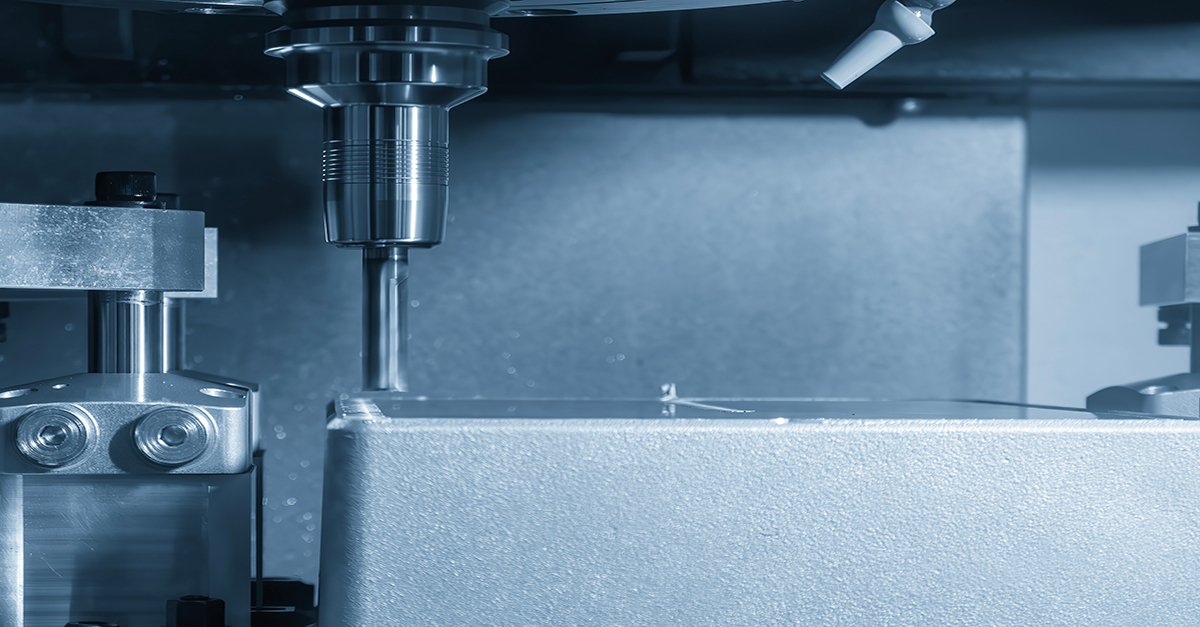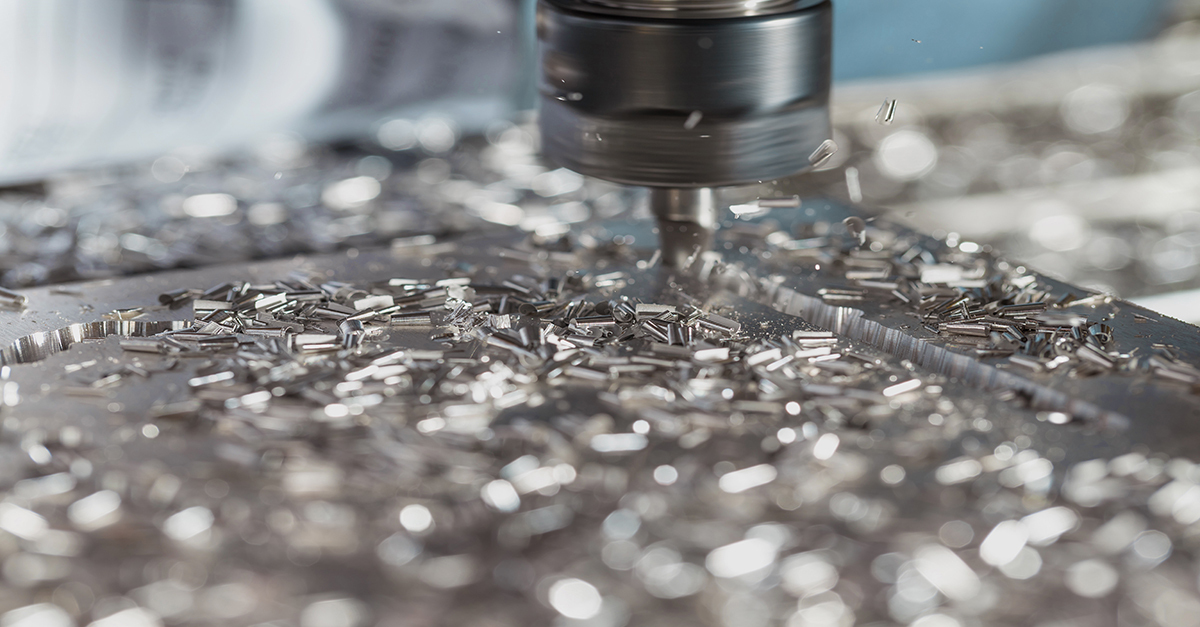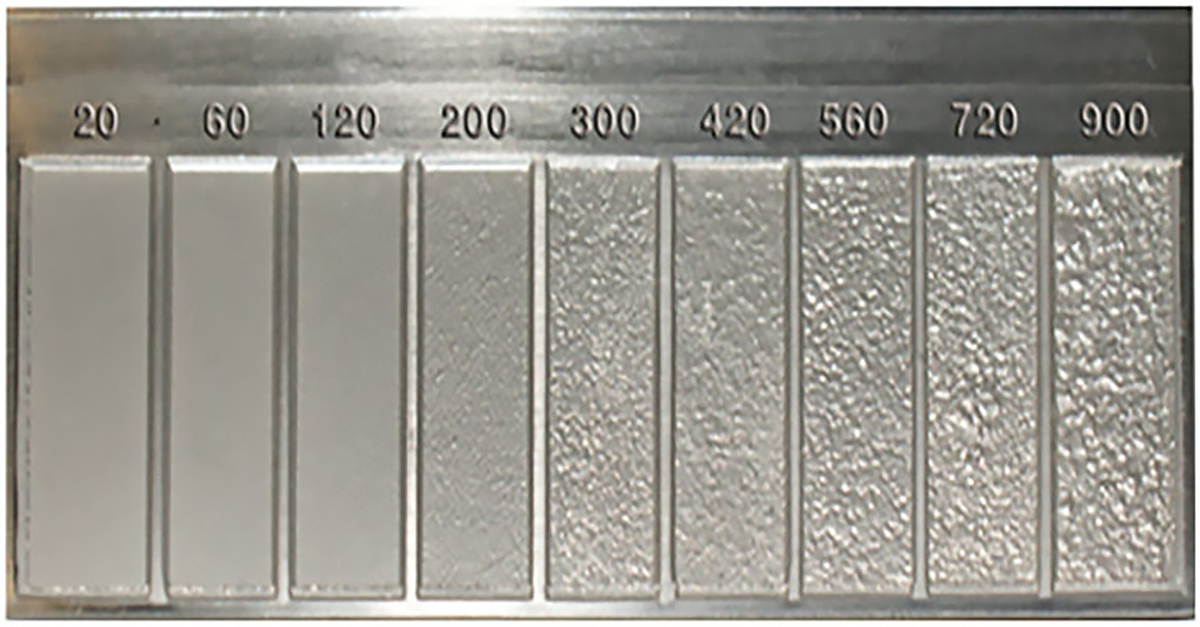How to Improve Your Aluminum Surface Finish when Finishing
Posted by Cam Glass on 09.02.25
Introduction
Here's a visual for you: you're in the shop, finishing the last pass on an aluminum cylinder head for a client. The job's behind schedule, so you're laser-focused on getting it right the first time.
The pass completes, you loosen the vise, and your eyes catch tool marks, chatter lines, and burrs across the surface. You can't catch a break. You step outside for five minutes because you've seen this movie before.
Surface finish issues are not just cosmetic. They derail schedules, lead to rework, and frustrate customers who expect perfection, especially when it comes to aluminum.
The good news is that most problems can be traced back to a handful of controllable factors, including feeds and speeds, tool geometry, or workholding.

By learning how to measure finish using Ra and RMS and applying straightforward adjustments, you can improve aluminum surface finish and prevent headaches before they ruin your parts.
In this guide, we'll cover what aluminum surface finish really means, how to measure it, and how to fix common problems so your parts pass inspection the first time.
Common Causes of Poor Aluminum Surface Finish
A poor aluminum surface finish usually comes down to three main culprits: incorrect feeds and speeds, tool geometry issues, and poor workholding that allows chatter.
Secondary offenders include dull tools, aggressive step-over, coolant starvation, or a chip load that is too high.
- Chatter: Lines across the part face, often from fixture vibration or running roughing feeds into a finishing pass when milling aluminum.
- Dull Tools: "Ol' reliable" dragged too long into finishing duty leaves a hazy, torn surface.
- Coolant Issues: A clogged nozzle or dry spot streaks aluminum instantly.
- Chip Load Errors: Too much material per tooth tears aluminum instead of shearing it.

The image above would indicate that the machinist is not finishing, but roughing. This is because the tool geometry chosen is designed for maximum material and chip evacuation, rather than light finishing passes.
These are not mysteries; they are reminders. A poor finish is usually the tell that indicates what is wrong.
The key is to diagnose quickly so you can fix problems before inspection, or worse, before you have scrapped multiple parts.
Understanding and Measuring Aluminum Surface Finish
What Ra and RMS Mean
- Ra (Roughness Average): Measures the average height of peaks and valleys
- RMS (Root Mean Square): Uses a different calculation but lands in similar ranges
- Both: Give machinists numerical standards for surface smoothness or roughness
Aluminum prints often feature machine finish callouts, such as 32 Ra or 63 Ra. These are not "make it shiny" requests; they are precise requirements down to the micron.
A general-purpose machined aluminum part might spec 63 Ra, while a medical or aerospace component might demand 16 Ra or finer.
Customer rejections for "poor finish" almost always trace back to deviations from these numbers.
For machinists who want the math behind it, Ra is calculated as the arithmetic average of all the deviations from the mean line across the surface.
In simple terms, you add up the peaks and valleys, divide by the measured length, and that is your Ra.
Most shops will not calculate Ra by hand, as that is what gauges are for; however, it helps to know where those numbers on the print actually come from.
How to Use a Surface Roughness Chart and Gauge

A surface roughness chart translates Ra and RMS into visual or tactile references.
It shows you what a 32 or 63 Ra finish will look and feel like, enabling you to fully comprehend what the requested finish is, allowing you to adjust your workflows accordingly.
Pairing this chart with a surface finish gauge, which is typically a stylus-style profilometer, you'd drag across your surface.
After you drag the stylus, the indicator would provide hard data to confirm or deny that your part's finish meets the callout. The chart clues you in, and the gauge dials you in.
Old-school fingernail drag tests still exist, but charts and gauges make the difference between guessing and knowing. And with aluminum, even minor imperfections stand out, so use every tool before the part leaves your bench.
How to Improve Aluminum Surface Finish When Milling
We've finally arrived. The reason you clicked into this article in the first place.
Four main adjustments will improve aluminum surface finish when milling:
- Reduce Step-Over: Heavy step-over leaves scallops. A lighter finishing pass smooths the cut.
- Use Climb Milling: Climbing shears aluminum cleanly, while conventional milling tends to tear it.
- Run a Dedicated Finisher: A 3-flute cutter with polished flutes or TiB2 coating outperforms a general-purpose tool every time. If a tool is designed for finishing, use it for finishing.
- Optimize Toolpaths: High-speed finishing passes and rest-machining smooth corners, and maintain consistency.
If chatter still shows up, fix the source with rigid fixturing, damping, or adjusting spindle speed to avoid harmonics. Most finish problems are not mysteries; they are process gaps waiting for correction.
Pro Tip: The right tool makes all of these adjustments easier. Sonic's 3-flute aluminum finishers, featuring polished flutes and TiB₂ coatings, are designed to leave cleaner surfaces on the first pass. Check them out here.
Best Practices for Mirror Finish on Aluminum Parts
Sometimes, good is not good enough. A mirror finish is the gold standard for cosmetic aluminum work, so reflective that you could check your shave in it: no haze, no lines, just a clean, polished surface.

Getting there means going beyond the basics:
- A finishing pass with a light step-over
- High spindle speeds with consistent coolant application
- Toolpaths programmed for smooth, uninterrupted motion
- Specialized cutters with polished flutes and coatings, such as TiB2
Some shops stop there, but when clients demand perfection, aerospace (often 16 Ra), medical devices (12 to 16 Ra), or consumer electronics (cosmetic-grade finish) may require polishing or buffing as the final step.
It adds time, but it is often the difference between a good finish and a true mirror. In those industries, surface finish is not just cosmetic; it's tied to product value and function.
The Importance of Surface Finish
While a surface finish may look good and a mirror finish satisfies an itch in our brains, they carry more importance than just aesthetic appeal.
A part's finish affects how it wears, how it fits together with other components, and how it performs in service.
In the aerospace and automotive industries, a poor finish can increase friction or reduce fatigue strength.
In medical and consumer products, rough surfaces can harbor bacteria or create cosmetic flaws that customers immediately notice. Meeting the machine finish callout protects both function and reputation.
Bringing It All Together
Surface finish issues are signals disguised as headaches.
They will frustrate you and cost you time, but tool marks, chatter, burrs, and haze almost always point back to the basics: feeds and speeds, tool geometry, or setup.
By understanding Ra and RMS, using charts and gauges, and applying proven fixes, you can improve aluminum surface finish and raise part quality practically overnight. A mirror finish is not required on every job, but knowing how to achieve it when clients ask sets your shop apart.
At Sonic Tools, we engineer cutters explicitly built for aluminum finishing. Our end mills feature polished flutes, advanced coatings like TiB2, and precision-ground carbide, ready to perform the first time.
With customization options and quick delivery, you will spend less time fixing finishes and more time shipping parts.
Explore Sonic's aluminum finishing tools at soniclp.com.
Better Tools. Better Results.
FAQ
How to get a better surface finish in machining?
Improving surface finish comes down to four key adjustments: reducing the step-over, using climb milling, running a dedicated finishing tool, and optimizing toolpaths. Rigid workholding and proper coolant flow also play key roles.
How to surface finish aluminum?
Start with lighter finishing passes, climb milling, and cutters explicitly designed for aluminum (polished flutes, TiB₂ coatings). For critical parts, polishing or buffing may follow machining.
What causes poor surface finish?
Common causes include incorrect feeds and speeds, dull or worn tools, poor workholding that allows chatter, heavy step-over, and inconsistent coolant application.
How can I eliminate tool marks when milling aluminum?
Tool marks are often caused by chatter, heavy step-over, or a dull tool. To eliminate them, switch to climb milling, use a lighter finishing pass, and run a sharp cutter designed for aluminum. Rigid fixturing and consistent coolant flow also reduce vibration and streaking.
What is the importance of surface finish?
Surface finish impacts part function, wear, sealing, and cosmetic quality. Clients often reject parts that do not meet Ra callouts, even if the part dimensions are correct.
What is a good Ra for aluminum machining?
A common aluminum surface finish for general machining is 32 Ra to 63 Ra. High-spec applications like aerospace, medical, or optical components may call for 16 Ra or finer. Always follow the machine finish callout on the print.
What does Ra mean in surface finish?
Ra, or Roughness Average, measures the average height of peaks and valleys on a machined surface. It is the most common standard for quantifying surface roughness.
What's the difference between Ra and RMS surface finish?
Ra measures the average of deviations, while RMS (Root Mean Square) calculates the square root of the mean of squared deviations. Both provide similar values, but Ra is more commonly used today.
What is the easiest aluminum for machining?
6061 is widely considered the easiest aluminum alloy to machine because of its balance of strength, ductility, and workability. 7075 also machines well, but is harder and less forgiving on your cutter.
Is lapping the same as grinding?
No. Grinding removes material with a rotating abrasive wheel, while lapping uses a fine abrasive slurry to create an ultra-smooth finish. Both improve surface quality but are used in different contexts.
Check Out Our Other Articles
- Are You Choosing the Right End Mill for Milling Aluminum?
- Why the Best Shops Get Better Results With the Same Tools
- 5 Speeds and Feeds Mistakes That Could be Ruining Your Tools
- Carbide End Mills 101: Tool Types, Geometry, and Selection Tips
